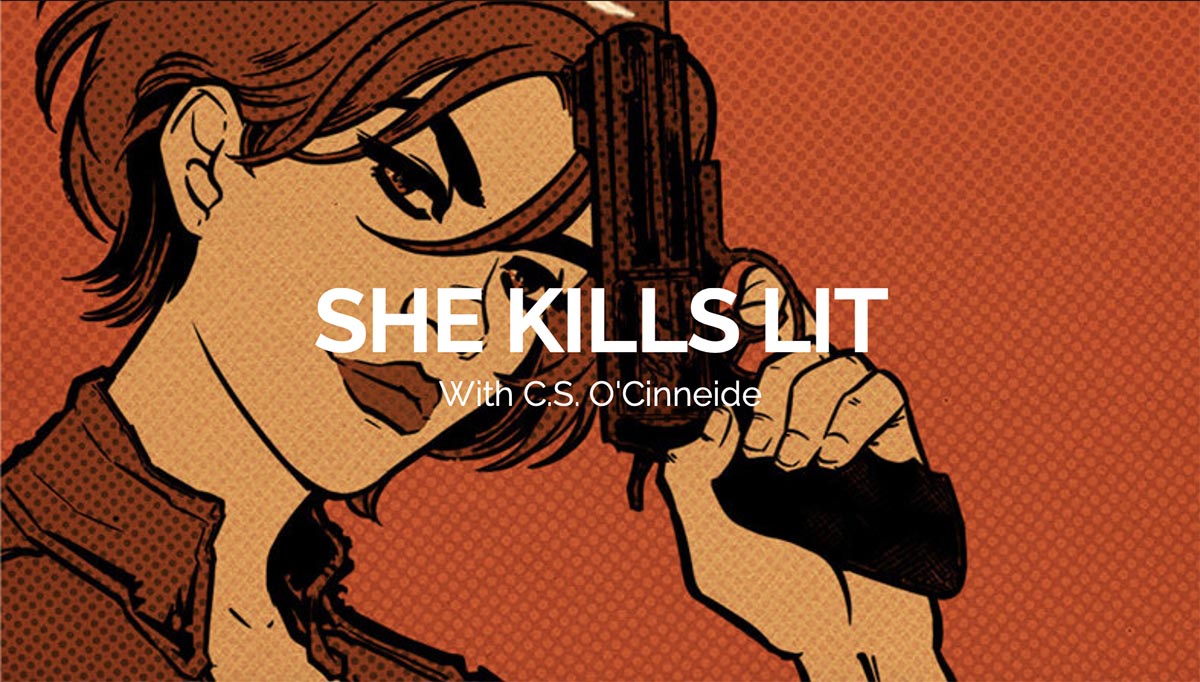The fab horror and mystery author and book critic C.S. O’Cinneide interviews Elka about writing and so much more
Interview with Elka Ray
Elka Ray is a Canadian/UK author, editor, and illustrator. For adults, Elka writes crime, and is the author of three novels – the upcoming romantic mystery Divorce is Murder, due out with Seventh Street/Prometheus in June 2019; Saigon Dark (2016), a noir thriller; a lighter mystery, Hanoi Jane(2011); and a collection of short crime stories: What You Don’t Know: Ten Tales of Obsession, Mystery & Murder in Southeast Asia (2016).
Her children’s picture books focus on Vietnam, where she lives by the beach with her family. When Elka’s not writing, reading, or drawing, she’s in the ocean.
The ocean is a big part of your life. You live by it and dream by it. Tell us about that.
After twenty-plus years living in huge, congested cities, going on four years ago my family moved to the beach in Central Vietnam. When I’m tired, frustrated, or dispirited I walk two minutes to the sea. All the little things that build up and get to you get washed away in the ocean.
Even as a kid I had dreams about the sea: looking through clear water to see fish swimming around; jumping killer whales; tsunamis. I think it relates to the subconscious and creativity – trying to peer into it and not knowing what might leap out – and possibly eat you.
Your books range from domestic noir and tales of murder to beach read mysteries and children’s books where people are smelly. Which genre do you like writing the best and why?
I like to read and write stories about crimes or morally questionable choices. If no one’s screwing up, there’s no story.
Divorce is Murder comes out next summer, your third novel. Sounds like domestic noir, but will it be more of a beach read?
It’s a mystery set on Vancouver Island, where I grew up. There’s a murder, loads of suspense, and some romantic angst, all narrated by a wryly funny main character – Toby Wong, a Chinese-Canadian divorce lawyer. It’s perfect for the beach – fast-paced and edgy, but light enough to read while guzzling Pina Coladas.
I love that the mean girls from Toby Wong’s teen years’ summer camp are suspects in Divorce is Murder. Girls can be so nasty at that age. Why do you think that is?
Insecurity. Adolescents are like scared cats, hissing and puffing themselves up. Boys can be mean too but it seems simpler – more physical and less psychological. Maybe it’s because society is always telling girls to be nice. All that aggression goes underground.
Saigon Dark, your second novel, has an underlying theme of fate and how it affects our lives. How much do you think fate has influenced your own life? Is life truly “a box of chocolates?”
I think many people believe they’re the agents of their success. They credit their intelligence, creativity, and hard work for getting ahead. Of course these traits help but they’re not the whole story. You might be a genius and blessed with mind-blowing talent, but if you’re born into a poor peasant family during a famine in some war stricken pariah state, odds are you won’t reach your full potential. When I think of “fate” I think of family and citizenship. I had the great good fortune to grow up with a loving family in a stable, peaceful country that gave me access to good education and healthcare.
Humour is a big part of your writing style. Even a noir like Saigon Dark has some. Tell us a joke in Vietnamese. Then put it into Google Translate and let’s see how bad a job it does.
I can’t recall any humor in Saigon Dark but am pleased some crept in. This question has been a nightmare. Lost in translation doesn’t begin to cover it. Every Vietnamese “joke” I’ve been told has been the opposite of funny, leaving me feeling baffled and defective. In place of “jokes” I was told riddles. As in:
Có một người da đen kết hôn với một người da trắng, sau đó họ có 1 em bé. Hỏi em bé đó có răng màu gì?
Which translates as:
A white person married a black person and had a baby. What color are its teeth?
My lame guess: Um, mixed?
Answer: Babies don’t have teeth.
I much prefer Google Translate’s version:
There is a black man who marries a white man, then they have a baby. Ask the baby what color teeth?
Answer: Rainbow.
Hanoi Jane, your first novel, gives me a sort of Sex in the City vibe, Vietnamese style. Tell us about your inspiration for the characters and the setting, and whether you were Carrie Bradshaw or Samantha Jones.
Yes, Hanoi Jane was written during the last gasps of the ‘Chick Lit’ era. I wrote it when I had a small baby, was sleep-deprived, and needed cheering up. It was a rose-tinted look back at being young, carefree, and single. In reality, I was neither Carrie nor Samantha. I’m much more reserved. Even watching them embarrassed me. While I’m happy for everyone who’s having good sex – and am fine with writing sex scenes – the thought of sitting around listening to people discuss it in real life sounds about as appealing as wearing that heinous tutu.
Your upcoming novel, Divorce is Murder, is your first set outside of Southeast Asia. How do the wilds of British Columbia stack up against the exoticness of Vietnam and who has the best coffee?
Setting a murder mystery in Victoria, B.C., where I grew up, was fun. Victoria is gorgeous, with beautiful coastal scenery, endless parks, and really quaint, picturesque neighborhoods. In fact it’s so serene I don’t trust the place: what’s happening behind those manicured hedges? Seeming perfection makes me nervous.
As the title suggests, Saigon Dark was mainly set in Saigon. It’s a much darker, more desperate tale – perfect for that grittier setting.
As for the coffee – Vietnamese coffee is stronger. I don’t travel without it.
I read in a previous interview (obviously not as weird as mine) that you were inspired to write your first book of short stories, What You Don’t Know: Ten Tales of Obsession, Mystery & Murder in Southeast Asia, after reading Andrew Pyper’s Lost Girls. What other authors or books have inspired you in your writing?
Animal Farm: I read this aged 12. When Boxer got carted off to the knackers I cried until my eyes glued shut. This taught me how powerfully fiction can get a point across.
A Tale of Two Cities: I was about 14 when I read it and have never forgotten Madame Defarge, who sits and knits as aristocrats’ heads are cut off. The message was clear: there’s nothing as memorable as a good villain with a strong backstory.
In the Skin of a Lion: I read Michael Ondatje’s novel about the building of Toronto in my 20s. I found the plot impossible to follow. But who cares? There were a few scenes – like the one when they’re ice skating on a torchlit lake – so luminous I swear I was there. This book taught me the power of poetic language.
A Simple Plan. Scott Smith’s 1993 thriller turned me to a life of reading – and later writing – crime. It’s about a few guys who find a bag of cash in a crashed plane and do the wrong thing. Scott doesn’t just make you understand their actions. He makes you complicit.
If you were to bury one book in a time capsule for future generations to find, what would it be?
Goodnight Moon. It’s by far the creepiest book I’ve ever read. Is that why small kids love it? Imagine future social scientists trying to decode the symbolism. What does the Moon represent? What is Mush?
To find out more about Elka Ray and her books, see below.
www.facebook.com/elkaraybooks/

